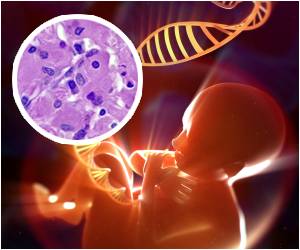Around 15 years ago it was found that the genes BRCA1 and BRCA2 confer high risks for breast and ovarian cancer
Around 15 years ago it was found that the genes BRCA1 and BRCA2 confer high risks for breast and ovarian cancer. The finding was a breakthrough for cancer prediction and therapy, especially for familial cases.
Now the research group of Prof. Alfons Meindl (Klinikum rechts der Isar of the Technische Universitaet Muenchen), in collaboration with other groups from Germany, the U.K., and the U.S., can identify another gene that increases susceptibility to breast and ovarian cancer. Their results have been published online in Nature Genetics. The identification of such high risk-conferring genes is a prerequisite for offering women tailored early recognition programs and more individualized therapies.The gene newly identified as causing breast and ovarian cancer in familial cases is designated RAD51C. It is, like BRCA1 and BRCA2, essential for DNA repair within cells. Mutations in the gene can therefore cause either breast or ovarian cancer. In six out of 480 pedigrees with occurrence of breast and/or ovarian cancer, mutations within the RAD51C gene were found. The risk for breast cancer in women with mutation of RAD51C is 60 to 80 percent, for ovarian cancer 20 to 40 percent. As the cancers in such families were diagnosed significantly earlier than in women who developed sporadic breast or ovarian cancer, experts might also call the newly identified gene BRCA3.
"These results reinforce our assumption that various rare gene mutations contribute to hereditary breast and ovarian cancer. The now known genes that predispose women to breast and/or ovarian cancer only explain 60 percent of the high-risk families," says TUM Professor Alfons Meindl, Klinikum rechts der Isar, but novel technologies allow the rapid identification of other such rarely mutated disease-causing genes.
"We are also optimistic that in the future the individual breast cancer risks for the majority of women can be determined. These risk predictions will allow the offering of tailored prevention and small meshed early recognition programs. Risk-aligned prevention will become a new clinical area," explains Prof. Dr. Rita Schmutzler of the University Hospital of Cologne, one of the other main authors of the article.
Source-Eurekalert
RAS















